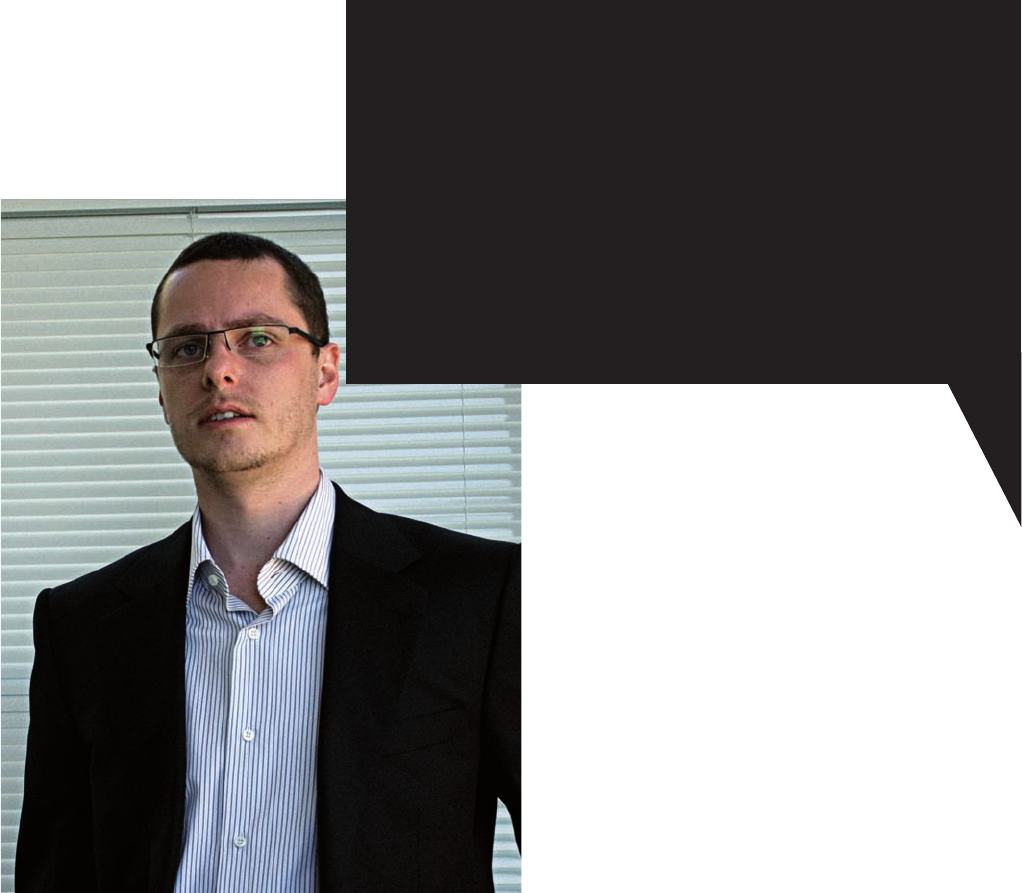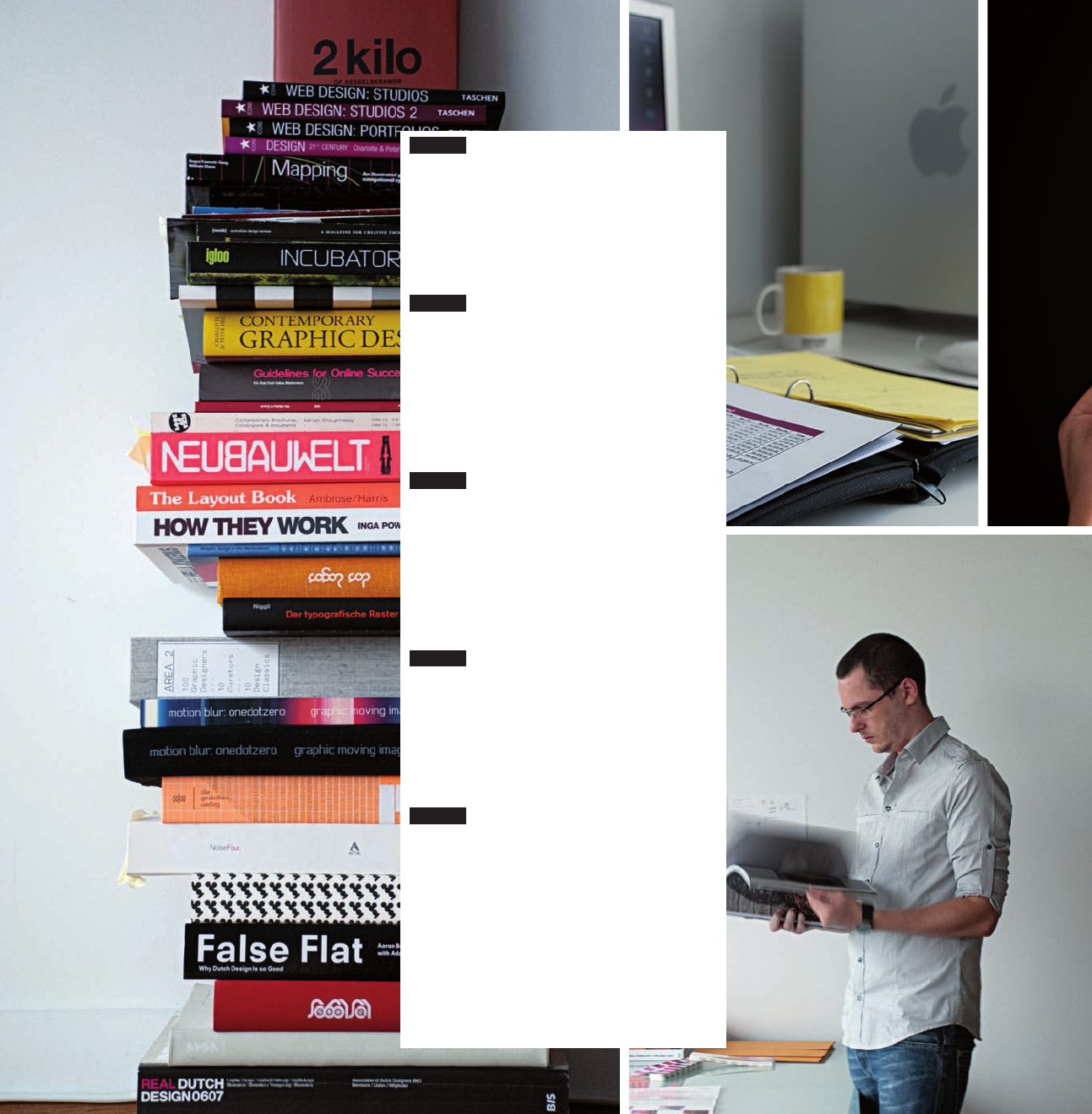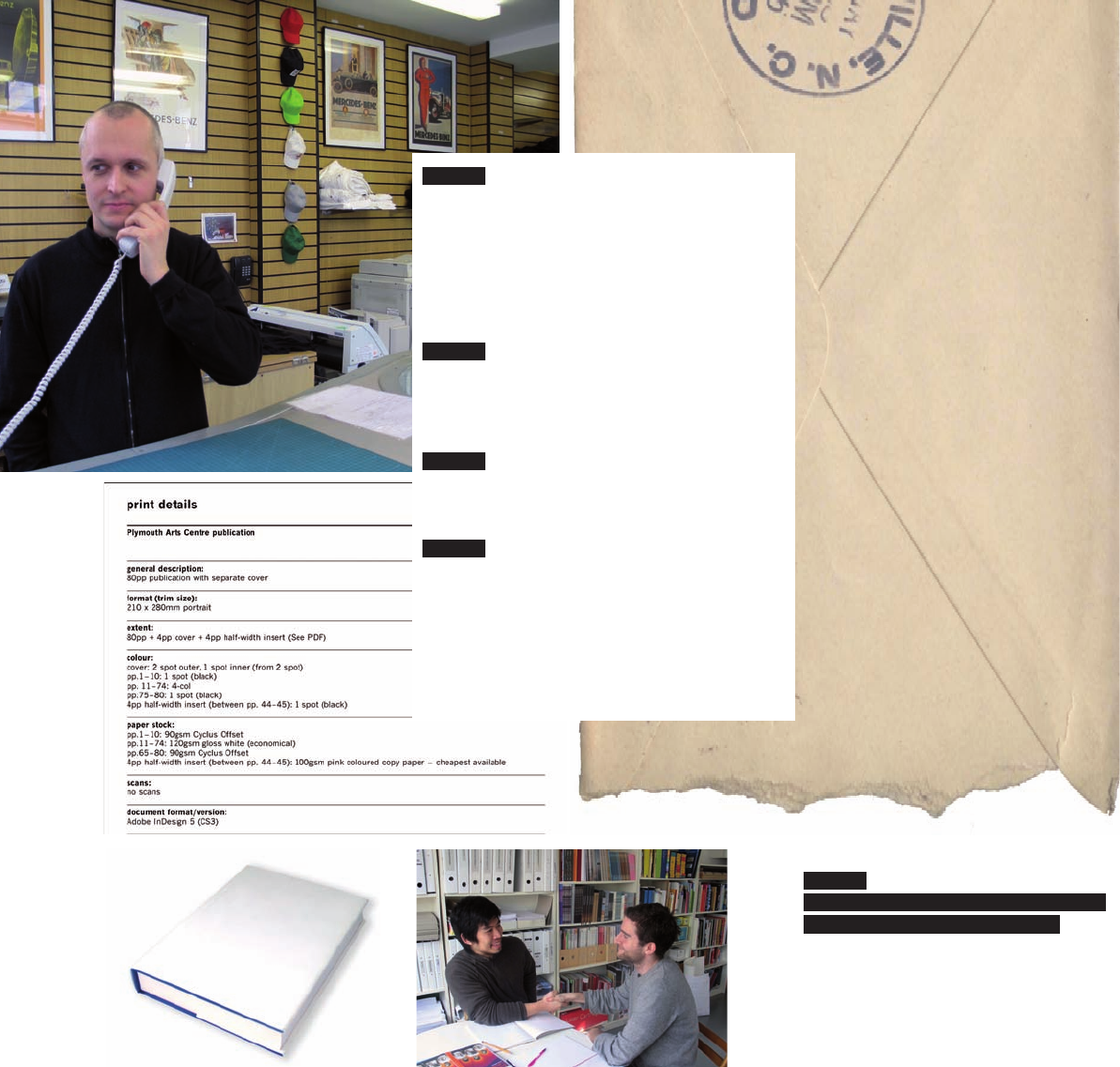
D
esigners
)
Page:22
(RAY)
08-13937 Job:08-13923 Title:RP-1000 Ideas x 100 Graghic Designers
#175 Dtp:160(P) Page:23
018-025_13937.indd 23018-025_13937.indd 23 8/25/09 12:52:32 PM8/25/09 12:52:32 PM
Text
Alan van Roemburg 23
Born in Melbourne, Alan
van Roemburg spent
most of his adolescence
in the Netherlands
before returning to
Australia at 16 to begin
his studies in design.
He graduated from
Swinburne University
National School of
Design in 2005 with a
Bachelor of Multimedia
Design and was awarded
a scholarship for honors.
Alan has worked for
numerous prestigious
design agencies, among
them David Trewern
Design. Clients include
Arologic, Certified
Practicing Accountant
Australia, Parkslide
Enterprises, and Paul
Barbera Exhibitions.
Now 26, he owns and
operates his own design
firm in Melbourne. Alan’s
desire to continually
evolve as a designer
has led him to explore
many different design
disciplines, from from
web and logo design, to
print and packaging.
Alan van Roemburg
www.alanvanroemburg.com
D
esigners
)
Page:22
(RAY)
08-13937 Job:08-13923 Title:RP-1000 Ideas x 100 Graghic Designers
#175 Dtp:160(P) Page:23
018-025_13937.indd 23018-025_13937.indd 23 8/25/09 12:52:18 PM8/25/09 12:52:18 PM

(RAY)
08-13937 Job:08-13923 Title:RP-1000 Ideas x 100 Graghic Designers
#175 Dtp:160(P) Page:24
018-025_13937.indd 24018-025_13937.indd 24 8/25/09 12:52:33 PM8/25/09 12:52:33 PM
Text
11 RESEARCH. When engaging in a
new project, regardless of the discipline,
my fi rst step is research. Understand the
nature, audience, and subject matter as
this enables you to fi nd the appropriate
solution therefore bringing meaning and
purpose to the design.
12 C
OLLECT. I have boxes and
drawers full of magazines, fl yers,
brochures, books, leafl ets, and many
other odds and ends I have collected over
the years. Organize your materials, as
this can often be the best place to start
when drawing for new inspiration. Collect
and collate materials.
13 C
ONCEPTUALIZE. When beginning
new projects, brainstorm as many ideas
as possible in no particular order. Avoid
initial critiquing, over-thinking, and
second-guessing as this breaks the
conceptual process. The key is to keep
drawing and evaluate later. Multiple
short sessions work best.
14 S
KETCHES AND RECORDS. Order,
date, and maintain your sketches and
don’t forget to keep copies. This allows
you to develop, build or stimulate ideas
and is also a record of the process to
prove intellectual property over your
designs.
15 S
TRUCTURE. Setup the structure,
namely grids and typography. Correct
application of these elements allows
for consistency in design. It is also the
easiest way to organize information
and different elements while remaining
appealing and harmonized to the viewer.
(RAY)
08-13937 Job:08-13923 Title:RP-1000 Ideas x 100 Graghic Designers
#175 Dtp:160(P) Page:24
018-025_13937.indd 24018-025_13937.indd 24 8/25/09 12:52:18 PM8/25/09 12:52:18 PM

D
esigners
)
Page:24
(RAY)
08-13937 Job:08-13923 Title:RP-1000 Ideas x 100 Graghic Designers
#175 Dtp:160(P) Page:25
018-025_13937.indd 25018-025_13937.indd 25 8/25/09 12:52:42 PM8/25/09 12:52:42 PM
Text
20
D
IVERSIFY. Running a multi-disciplinary
design studio can be hard, but
rewarding. Exploring different
design disciplines involves learning
and research must follow very
similar rules and practices. The
understanding of a wide range of
disciplines can assist in design
success and can further business
opportunities.
16 PRACTICE AND STUDY. Like many
designers I started my career being
overly creative without much thought for
structure. As I gained more experience, I
began to realize that more often than not,
simplicity and structure is the correct
method. Practice design and study it.
17 C
LIENTS. Be well prepared for
meetings with clients and research
beforehand. This will not only impress
them, but will also allow for a more
effective meeting. Clients will appreciate
time spent with them. Time is money, so
use it wisely.
18 H
AVE FUN. Often the best results
come when the mind is free and relaxed.
If you hit a mental block, take a break and
fi nd a distraction to free your mind then
re-examine the problem later. My other
passion is music so I like to have a mix on
the turntables to regain inspiration.
19 W
ORKSPACE. Keep a well-
organized and tidy workspace. Avoid
clutter and make sure you have plenty
of inspirational material that is readily
accessible. Surround yourself with
material and inspiration that relates to
the current project you’re working on.
D
esigners
)
Page:24
(RAY)
08-13937 Job:08-13923 Title:RP-1000 Ideas x 100 Graghic Designers
#175 Dtp:160(P) Page:25
018-025_13937.indd 25018-025_13937.indd 25 8/25/09 12:52:18 PM8/25/09 12:52:18 PM

(RAY)
08-13937 Job:08-13923 Title:RP-1000 Ideas x 100 Graghic Designers
#175 Dtp:160(P) Page:26
026-031_13937.indd 26026-031_13937.indd 26 8/25/09 12:51:11 PM8/25/09 12:51:11 PM
Text
21 HAVE TEA WITH YOUR CLIENT. It is
important to sit down with the client and
spend time discussing the project. That way
you become confi dent about the brief and
what is required of your role as designer.
22 A
LLOW PLENTY OF TIME FOR THE IDEA TO
COME TOGETHER. Mull the job over in your mind
before starting to produce visuals. Think
about it while you’re on your way to work,
sitting on the bus, cooking dinner, at the
cinema, etc.
23 A
VOID GOING TO DESIGN BOOKSHOPS FOR
INSPIRATION. The seductive visuals distract
you from the client’s brief, and therefore
the content of what you are designing.
24 T
IDY UP. For me it is important to
tidy my desk before I start on a new project.
This way my attentions are focused on the
project and are not distracted by mess
lurking underneath. I have to force myself
to do this when I’m especially busy but it’s
always worth it.
25 P
RESENT MORE THAN ONE DESIGN
SOLUTION. Often the fi rst is the best one,
but testing one or two others gives your
client alternative options (your taste may
be completely different from theirs), and
forces you to more thoroughly test your
preferred idea.
(RAY)
08-13937 Job:08-13923 Title:RP-1000 Ideas x 100 Graghic Designers
#175 Dtp:160(P) Page:26
026-031_13937.indd 26026-031_13937.indd 26 8/25/09 12:50:53 PM8/25/09 12:50:53 PM

D
esigners
)
Page:26
(RAY)
08-13937 Job:08-13923 Title:RP-1000 Ideas x 100 Graghic Designers
#175 Dtp:160(P) Page:27
026-031_13937.indd 27026-031_13937.indd 27 8/25/09 12:51:16 PM8/25/09 12:51:16 PM
Text
26 TALK THROUGH YOUR IDEA WITH A PRINTER
BEFORE PRESENTING IT TO THE CLIENT. The printer
will be able to tell you if there are any
potential production problems (in which
case you have to choose whether or not
to take the risk), and may be able to offer
some useful advice.
27 A
S SOON AS THE CLIENT HAS AGREED
ON THE FORMAT GET A FULL SPEC TO THE PRINTER.
You need to be aware of any potential
production restraints at the start.
28 D
ON’T BE A DUMMY. Always get a
blank dummy produced and make sure
the client sees it.
29 A
LWAYS BE POLITE, PROFESSIONAL, AND
RESPECTFUL TOWARDS YOUR CLIENT. A healthy
client/designer relationship is key to a
successful end product.
30
Keep a record of all correspondence
in case something goes wrong.
Always agree on prices in writing,
not over the phone where there is no
visual record.
Anne Odling-Smee 27
D
esigners
)
Page:26
(RAY)
08-13937 Job:08-13923 Title:RP-1000 Ideas x 100 Graghic Designers
#175 Dtp:160(P) Page:27
026-031_13937.indd 27026-031_13937.indd 27 8/25/09 12:50:53 PM8/25/09 12:50:53 PM
..................Content has been hidden....................
You can't read the all page of ebook, please click here login for view all page.
